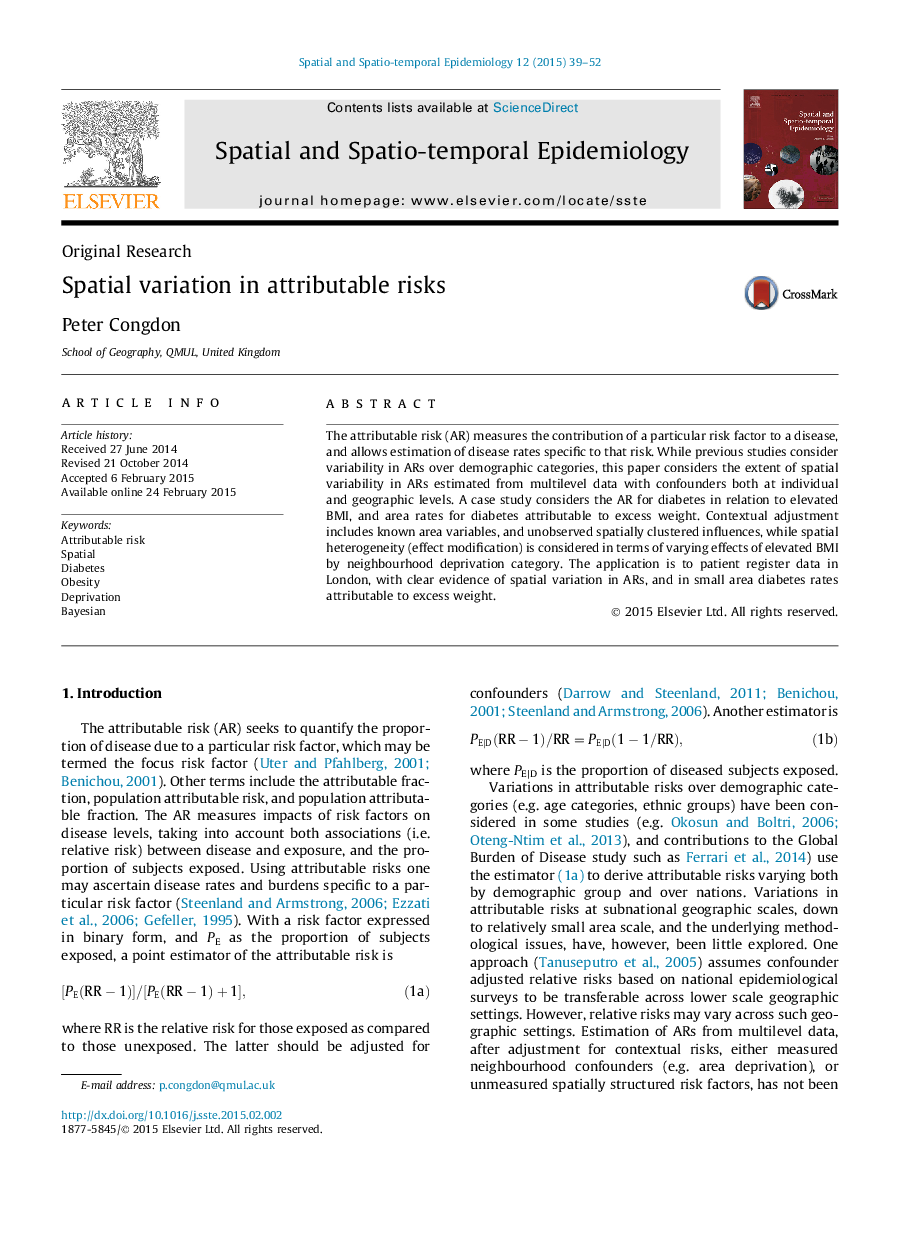| Article ID | Journal | Published Year | Pages | File Type |
|---|---|---|---|---|
| 1064325 | Spatial and Spatio-temporal Epidemiology | 2015 | 14 Pages |
•Considers attributable ratios for multilevel data for diseases subject to environmental risk.•Finds diabetes-BMI attributable ratio varying almost three fold by area deprivation level.•Finds considerable model uncertainty using a Bayesian variable selection approach.
The attributable risk (AR) measures the contribution of a particular risk factor to a disease, and allows estimation of disease rates specific to that risk. While previous studies consider variability in ARs over demographic categories, this paper considers the extent of spatial variability in ARs estimated from multilevel data with confounders both at individual and geographic levels. A case study considers the AR for diabetes in relation to elevated BMI, and area rates for diabetes attributable to excess weight. Contextual adjustment includes known area variables, and unobserved spatially clustered influences, while spatial heterogeneity (effect modification) is considered in terms of varying effects of elevated BMI by neighbourhood deprivation category. The application is to patient register data in London, with clear evidence of spatial variation in ARs, and in small area diabetes rates attributable to excess weight.
